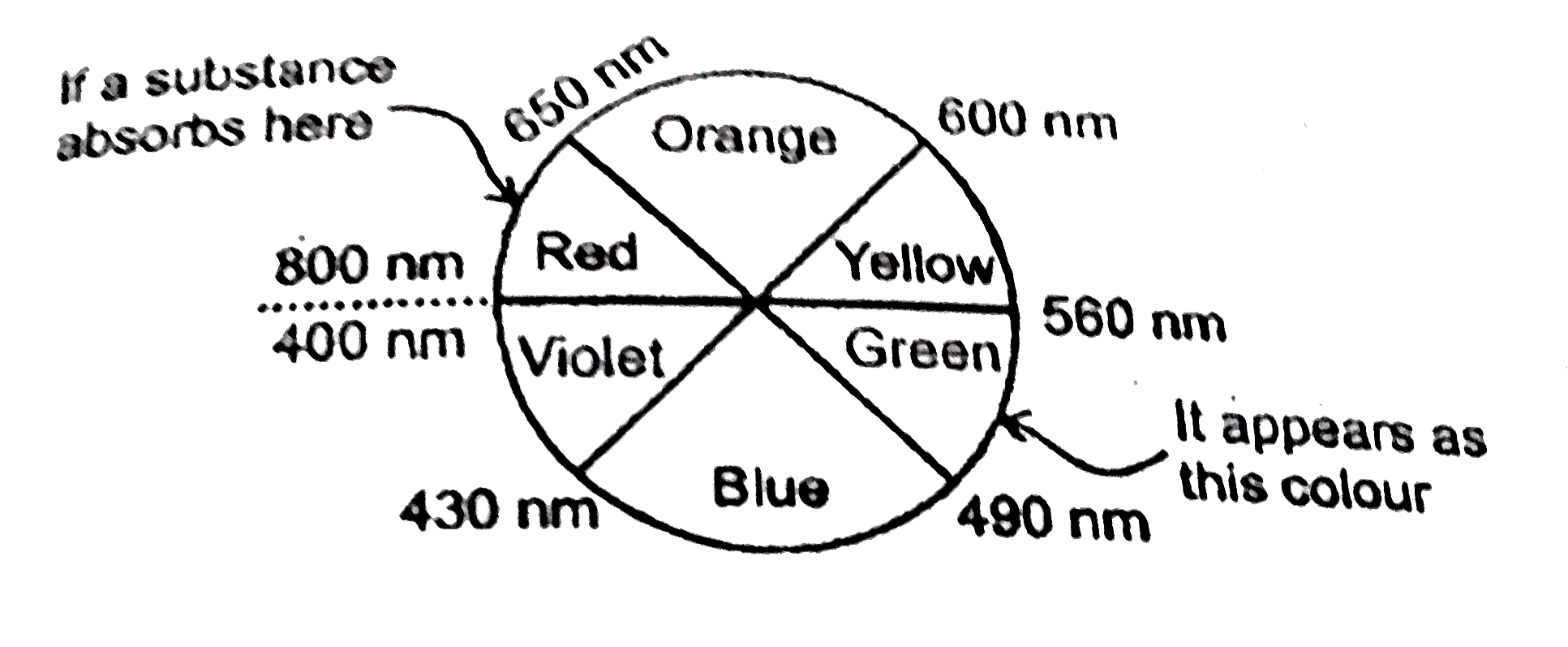s-1: [MnCl6]3,[FeF6]3− and [CoF6]−3 are paramagnetic having four, five and four unpaired electrons respectively.
S-2: Valence bond theory gives a quantitative interpreation of the thermodynamic stabilities of coordination compounds.
S-3: The crystal field splitting Δo depends upon the field produced by the ligand and charge onn the metal ion.
T T T
TFT
F T F
T F F
The correct Answer is:B

S2:V.B.T does not give any interpretation about the relative thermodynamic stabilities of various complexes.
This is one of the limitation of V.B.T
S3:is a correct statement
Topper's Solved these Questions
Similar Questions
Knowledge Check
consider the following statements :
Statement-1: [MnCL6]3−, and [CoF6]3− are paramagnetic having four, five and four unpaired electrons respectively.
Statement-2: Valence bond theory gives a quantitative interprtation of the thermodynamic stabilities of coordination compounds.
Statement-3: The crystal field splitting Δ0, depends upon the field produced by the ligand and charge on the metal ion.
and arrange in the order of true/false.ATTTBTFTCFTFDTFFStatement-1: Among the complexes [Fe(CN)6]4− and [Fe(NH3)6]2+, former complex absorbs the light of shorter wavelength.
Statement-2: The crystal field splitting depends upon the strength of the ligands and charge on the metal ion.AStatement-1 is True, Statement-2 is True , Statement-2 is a correct explanation for Statement-1.BStatement-1 is True, Statement-2 is True, Statement-2 is NOT a correct explanation for Statement-1.CStatement-1 is True, Statement-2 is False.DStatement-1 is False, Statement-2 is True.Statement-1: Among the complexes [Fe(CN)6]4− and [Fe(NH3)6]2+, former complex absorbs the light of shorter wavelength.
Statement-2: The crystal field splitting depends upon the strength of the ligands and charge on the metal ion.AStatement-1 is True, Statement-2 is True , Statement-2 is a correct explanation for Statement-1.BStatement-1 is True, Statement-2 is True, Statement-2 is NOT a correct explanation for Statement-1.CStatement-1 is True, Statement-2 is False.DStatement-1 is False, Statement-2 is True.
Assertion: [Mn(CN)6]3−,[Fe(CN)6]3−and[Co(CN)6]3− have d2sp3 hybridisation
Reason: [MnCl6]3−and[FeCl6]3− are paramagnetic with unpaired electrons 4 and 5 respectively
View SolutionElectronic configuration of [Cu(NH3)6]2+ on the basis of crystal field splitting theory is
View SolutionAssertion : [Fe(H2O)6]2+ is sp3d2 hybridised and paramagnetic complex ion .
Reason : [Fe(H2O)6]2+ has four unpaired electrons as H2O is a weak field ligand .
View SolutionCrystal field theory views the bonding in complexes as arising from electrostatic interaction and considers the effect of the ligand charges on the energies of the metal ion d-orbitals
In this theory, a ligand lone pair is modelled as a point negative charge that repels electrons in the d-orbitals of the central metal ion.The theory concentrated on the resulting splitting of the d-orbitals in two groups with different energies and used that splitting to rationalize and correlate the optical spectra,thermodynamic stability, and magnetic properties of complexes.This energy splitting between the two sets of d-orbitals is called the crystal field splitting Δ.
In general, the crystal field splitting energy Δ corresponds to wavelenght of light in visible region of the spectrum, and colours of the complexes can therefore be attributed to electronic transition between the lower and higher energy sets of d-orbitals.
In general, the colour that we see is complementry to the colour absorbed.

Different metal ions have different value of Δ, which explains why their complexes with the same ligand have different colour.
Similarly the crystal field splitting also depends on the nature of ligands and as the ligand for the same metal varies from H2O to NH3 to ethylenediamine, Δ for complexes increase.Accordingly, the electronic transition shifts to higher energy (shorter wavelength) as the ligand varies from H2O from NH3 to en, thus accounting for the variation in colour.
Crystal field theory accounts for the magnetic properties of complexes in terms of the relative values of Δ and the spin pairing energy P. Small Δ values favour high spin complexes, and large Δ values favour low spin complexes.
The [Ti(NCS)6]3− ion exhibits a single absorption band at 544 nm.What will be the crystal field splitting energy (in kJ mol−1) of the complex ? (h=6.626×10−34J.s,C=3.0×105m/s,NA=6.02×1023 ions/mole.
View SolutionCrystal field theory views the bonding in complexes as arising from electrostatic interaction and considers the effect of the ligand charges on the energies of the metal ion d-orbitals
In this theory, a ligand lone pair is modelled as a point negative charge that repels electrons in the d-orbitals of the central metal ion.The theory concentrated on the resulting splitting of the d-orbitals in two groups with different energies and used that splitting to rationalize and correlate the optical spectra,thermodynamic stability, and magnetic properties of complexes.This energy splitting between the two sets of d-orbitals is called the crystal field splitting Δ.
In general, the crystal field splitting energy Δ corresponds to wavelenght of light in visible region of the spectrum, and colours of the complexes can therefore be attributed to electronic transition between the lower and higher energy sets of d-orbitals.
In general, the colour that we see is complementry to the colour absorbed.

Different metal ions have different value of Δ, which explains why their complexes with the same ligand have different colour.
Similarly the crystal field splitting also depends on the nature of ligands and as the ligand for the same metal varies from H2O to NH3 to ethylenediamine, Δ for complexes increase.Accordingly, the electronic transition shifts to higher energy (shorter wavelength) as the ligand varies from H2O from NH3 to en, thus accounting for the variation in colour.
Crystal field theory accounts for the magnetic properties of complexes in terms of the relative values of Δ and the spin pairing energy P. Small Δ values favour high spin complexes, and large Δ values favour low spin complexes.
Which of the following complexes are diamagnetic ?
[Pt(NH3)4]2+[Co(SCN)4]2−[Cu(en)2]2+[HgI4]2−square planartetrahedralsquare planartetrahedral(i)(ii)(iii)iv
View Solution
